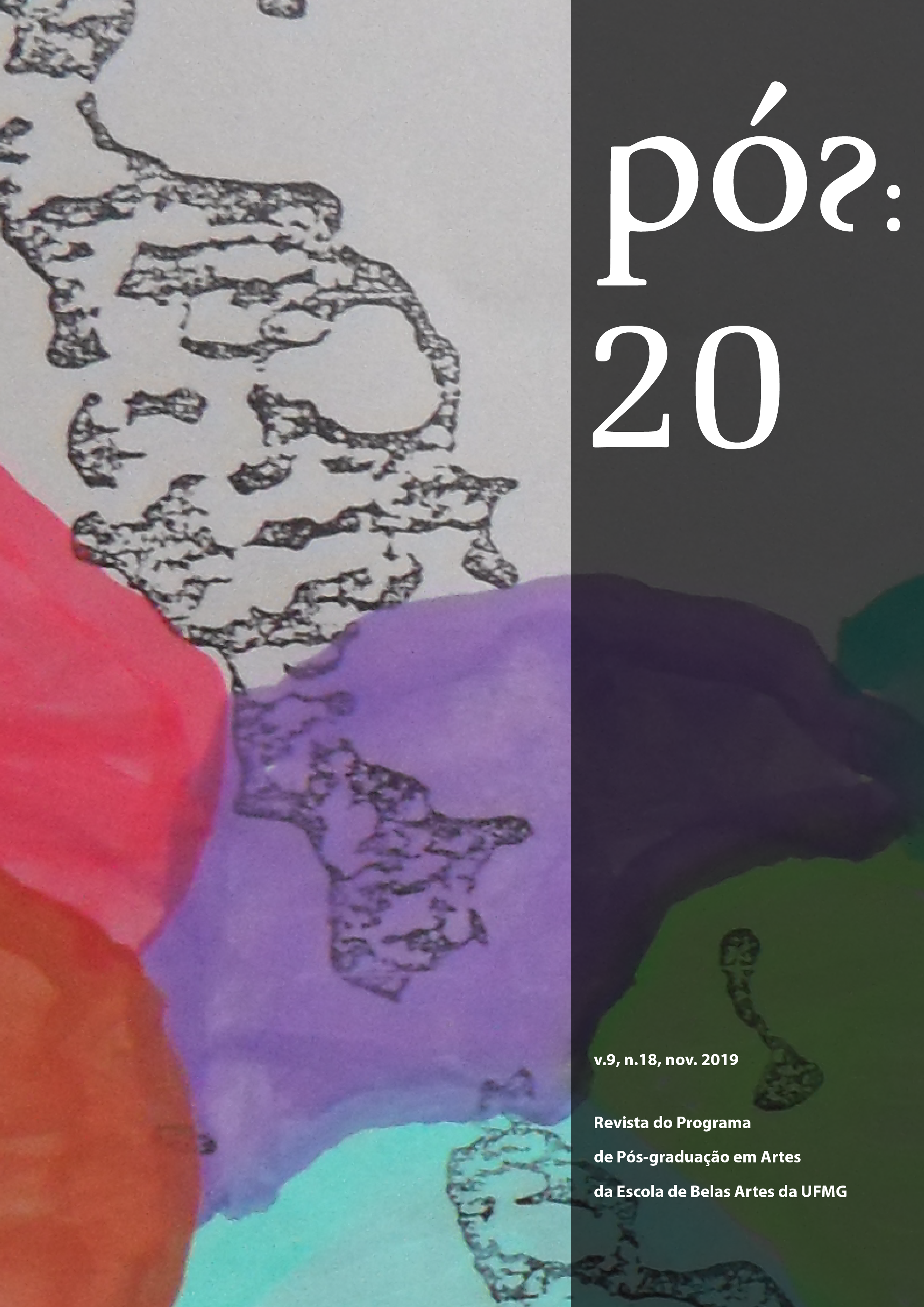Arts and well-being
The arts as positive interventions
DOI:
https://doi.org/10.35699/2237-5864.2020.20711Keywords:
Positive Psychology, Arts, Positive interventions, Psychological well-being, TherapyAbstract
The relation between arts and wellbeing has been recognised in different research studies, including those undertaken in the fields of health, therapy or education. From music to visual arts to cinema or photography, arts have been, and are, essential tools not only for healing but above all, to health and psychological wellbeing prevention and promotion. In this paper, taking into account the therapeutic value of arts, we identify the connections between arts and the five elements included in Seligman’s theoretical model of wellbeing, PERMA. We suggest that arts should be recognised as positive interventions under the broad umbrella of Positive Psychology.
References
Acebes de Pablo, A. & Giraldez-Hayes, A. (2019). El papel de la Musicoterapia y las terapias alternativas en el tratamiento del TDAH, un estudio exploratorio. Medicina Naturista, 13(1), 15-20.
All-Party Parliamentary Group on Arts, Health and Wellbeing (2017). Creative Health: The Arts for Health and Wellbeing. London: APPG. Recuperado de https://www.culturehealthandwellbeing.org.uk/appg-inquiry
Arts Council England (2007). The Arts, Health and Wellbeing. London: Arts Council England.
Ascenso, S., Perkins, R. & Aaron, R. (2018). Resounding Meaning: A PERMA Wellbeing Profile of Classical Musicians. Frontiers in Psychology, 9, article 1985.
Blomdahl, C. et al. (2013). A realist review of art therapy for clients with depression. The Ars in Psychotherapy, 40, 322-330.
Caspi, O. & Weihs, K. (2019). The role of emotional processing in art therapy (REPAT) for breast cancer patients. Journal of Psychosocial Oncology, 37(5), 586-598.
Chambala, A. (2008). Anxiety and Art Therapy: Treatment in the Public Eye. Art Therapy. Journal of the American Art Therapy Association, 25(4), 187-189.
Chlan, L. (1998). Effectiveness of a music therapy intervention on relaxation and anxiety for patients receiving ventilatory assistance. Heart & Lung, 27(3), 169-176.
Csikszentmihalyi, M. (2017). Aprender a fluir. Chicago: Editorial Kairos.
College of Medicine (2019). The arts are an ‘indispensable tool’ in helping the NHS, Matt Hancock tells The King’s Fund. College of Medicine and Integrated Health. https://collegeofmedicine.org.uk/the-arts-are-an-indispensable-tool-in-helping-the-nhs-matt-hancock-tells-the-kings-fund
Darewych, O. & Bowers, N. (2018). Positive arts interventions: creative clinical tools promoting wellbeing. International Journal of Art Therapy, 23(2), 62-69.
Dieterich-Hartwell, R. (2017). Dance/movement therapy in the treatment of post-traumatic stress: A reference model. The Arts in Psychotherapy, 54, 38-46.
Gable, S.L. & Haidt, J. (2005). What (and why) is positive psychology. Review of General Psychology, 9, 103-110.
Gussak, D. (2007). The Effectiveness of Art Therapy in Reducing Depression in Prisons Populations. International Journal of Offender Therapy and Comparative Criminology, 51(4), 444-460.
Hefferon, K. & Boniwell, I. (2014). Positive psychology: Theory, research and applications. London: OUP.
HM Government (2018). A connected society. A strategy for tackling loneliness. Londres: Department for Digital, Culture, Media and Sport. https://assets.publishing.service.gov.uk/government/uploads/system/uploads/attachment_data/file/750909/6.4882_DCMS_Loneliness_Strategy_web_Update.pdf
Kurtz, J.L. & Lyubomirsky, S. (2013). Happiness promotion: Using mindful photography to increase positive emotion and appreciation. En J.J. Froh & A.C. Parks (Eds.), Activities for teaching positive psychology: A guide for instructors (pp. 133-136). DC: American Psychological Association.
Johnson, J. et al. (2020). A Community Choir Intervention to Promote Well-Being Among Diverse Older Adults: Results from the Community of Voices Trial. The Journals of Gerontology, Series B, 75(3), 549-559.
Landy, R. (2010). Drama as a means of preventing post-traumatic stress following trauma within a community. Journal of Applied Arts and Health, 1(1), 7-18.
Leckey, J. (2011). The therapeutic The therapeutic effectiveness of creative activities on mental well‐being: a systematic review of the literature. Psychiatric and Mental Health Nursing, 18(6), 501-509.
Lee, J.; Krause, A.; Davidson, J. (2017). The PERMA well-being model and music facilitation practice: Preliminary documentation for well-being through music provision in Australian schools. Research Studies in Music Education, 39(1), 73-89.
Lomas, T. (2016). Positive art: Artistic expression and appreciation as an exemplary vehicle for flourishing. Review of General Psychology. 20 (2), 171-182.
Mastandrea, S., Fagioli, S. & Biasi, V. (2019). Art and Psychological Well-Being: Linking the Brain to the Aesthetic Emotion. Frontiers Psychology. DOI https://doi.org/10.3389/fpsyg.2019.00739
Mental Health Foundation (2011). An Evidence Review of the Impact of Participatory Arts on Older People. London: The Baring Foundation. https://www.mentalhealth.org.uk/sites/default/files/evidence-review-participatory-arts.pdf
OMS (1946). Constitución de la Organización Mundial de la Salud: Principios. http://origin.who.int/about/mission/es/
Robinson, K., & Aronica, L. (2010). El elemento. Buenos Aires: Grijalbo.
Rusk, R.D. & Waters, L.E. (2013). Tracing the size, reach, impact, and breadth of positive psychology. The Journal of Positive Psychology, 8(3), 207-221.
Seligman, M. (2011). Flourish. A New Understanding of Happiness and Wellbeing -and how to achieve them. London: Nicholas Brealey Publishing.
Selle, E. & Silverman, M. (2019). Cardiovascular patients’ perceptions of music therapy in the form of patient-preferred live music: Exploring service user experiences. Nordic Journal of Music Therapy, 29(1), 57-74.
Steger, F., Shim, Y., Rush, B.R., Brueske, R.A., Shin, J.Y. & Merriman, L.A. (2013). The mind´s eye: A Photographic method for understanding meaning in people’s lives. The Journal of Positive Psychology 8(6), 530-542.
Sin N. & Lyubomirsky S. (2009). Enhancing well-being and alleviating depressive symptoms with positive psychology interventions: a practice-friendly meta-analysis. J Clin Psychol, 65(5), 467–487.
Swaminathan, S. & Schellenberg, G. (2015). Current Emotion Research in Music Psychology. Emotion Review, 7(3), 189-197.
Tierranuestra (s.f.). Sonidos de la tierra. https://www.sonidosdelatierra.org.py/orquestas.php
Downloads
Published
Versions
- 2020-12-01 (2)
- 2020-11-29 (1)
How to Cite
Issue
Section
License
Copyright (c) 2020 Andrea Gilraldez

This work is licensed under a Creative Commons Attribution-NonCommercial 4.0 International License.
Authors who publish in this journal agree to the following terms:
- Authors retain copyright and grant the journal the right of first publication, with the work simultaneously licensed under the a Creative Commons Attribution-NonCommercial 4.0 International License that permits sharing of the work with acknowledgement of authorship and initial publication in this journal;
- Authors are permitted to enter into additional contracts separately, for non-exclusive distribution of the version of the work published in this journal (e.g., the Creative Commons Attribution License).
- Authors are permitted and encouraged to publish and distribute their work online (e.g., in institutional repositories or on their home page) at any point before or during the editorial process, as this may generate productive changes as well as increase the impact and citation of the published work.
- It is the responsibility of the authors to obtain written permission to use in their articles materials protected by copyright law. Revista PÓS is not responsible for copyright breaches made by its contributors.











